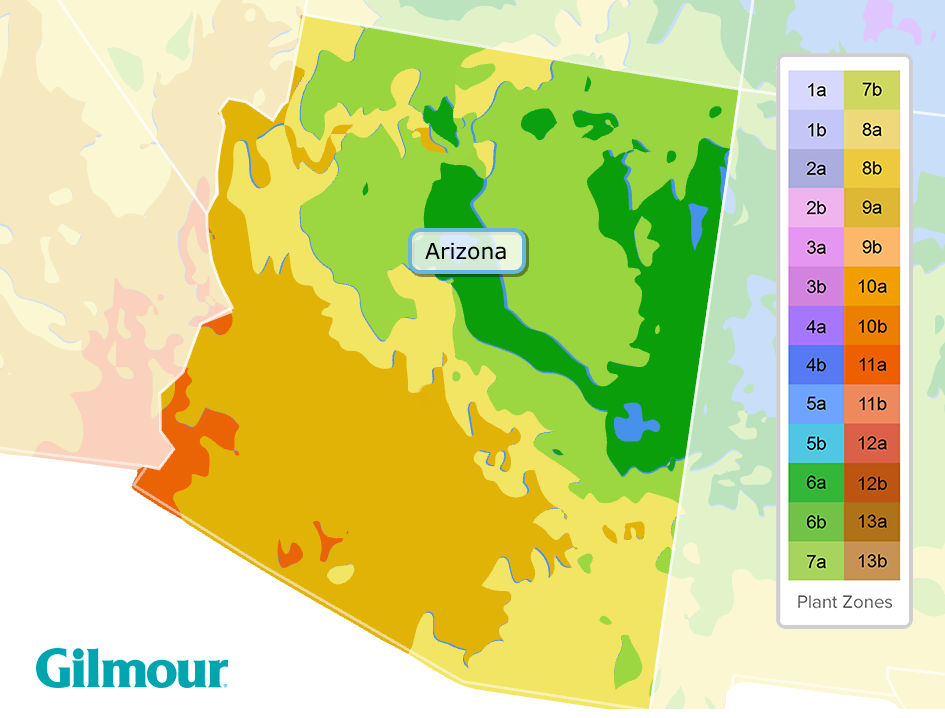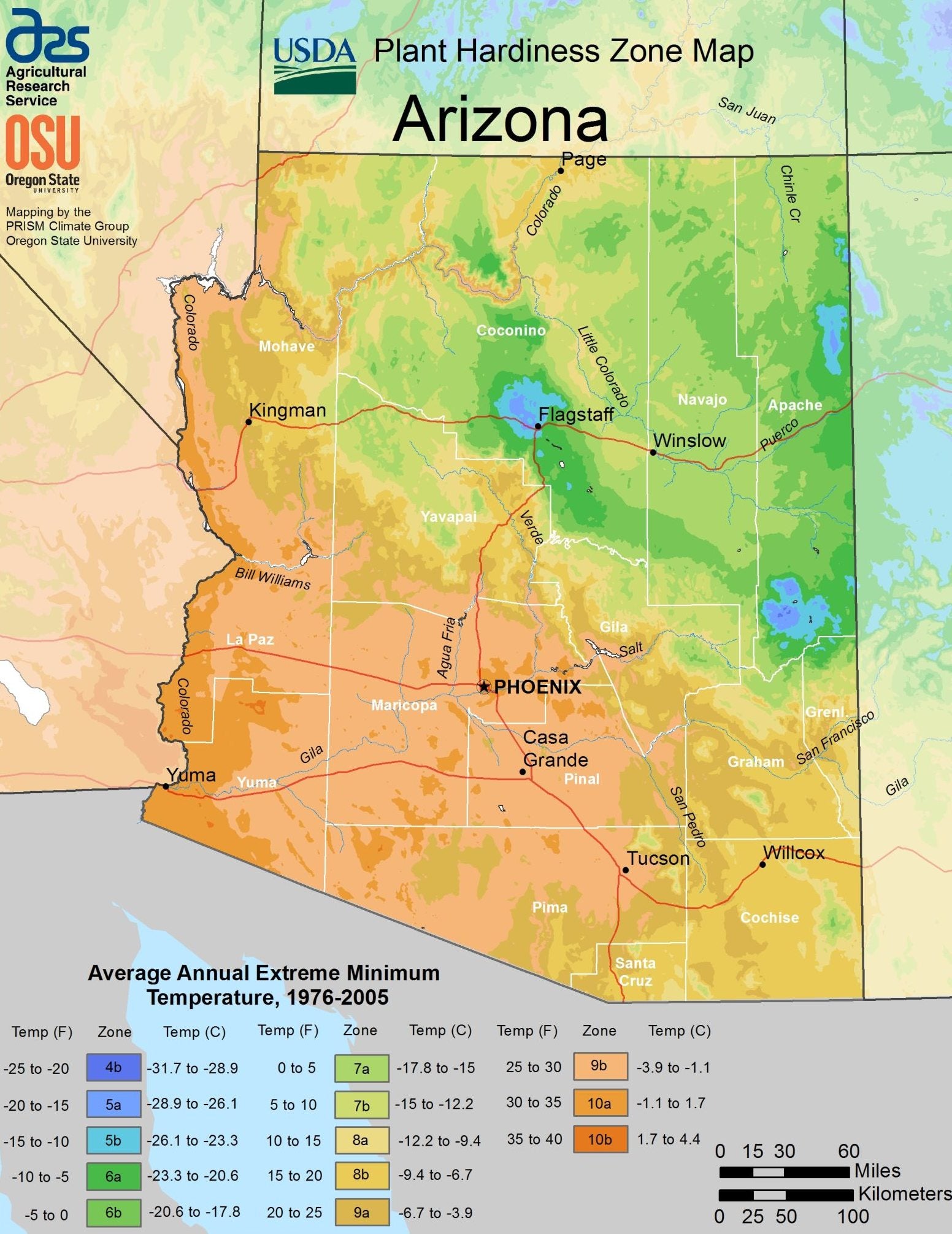Have you ever wondered why some plants thrive in your Phoenix garden while others struggle to survive? The secret lies in understanding your gardening zone.
In Phoenix, Arizona, knowing your specific gardening zone can make all the difference in turning your garden into a lush paradise. Imagine effortlessly growing vibrant flowers and flourishing vegetables that are perfectly suited to your climate. By understanding what gardening zone Phoenix falls into, you can unlock the secrets to gardening success in the desert.
So, are you ready to transform your garden into an oasis? Let’s dive into the specifics that will change the way you garden forever.
JUMP TO TOPIC
Phoenix Az Climate Overview
Phoenix, Arizona boasts a unique climate. Known for its desert landscape, it experiences extreme temperatures. Summers are particularly hot. Winters, on the other hand, are mild and pleasant. This climate greatly influences gardening choices.
What Is The Climate Like?
Phoenix features an arid climate. The sun shines nearly every day. Rain is scarce, with only about 8 inches annually. This dry weather impacts plant selection. Drought-resistant plants thrive best here.
Temperature Patterns
Summer temperatures often soar above 100°F. It’s not uncommon for it to reach 110°F. Winters offer relief with averages around 60°F. This warmth extends the growing season.
Impact On Gardening
The climate shapes local gardening practices. Heat-loving plants flourish in the Phoenix sun. Cactus, succulents, and native plants are popular choices. These plants require less water, making them ideal.

Credit: www.pinnacleprevention.org
Understanding Gardening Zones
Gardening zones are essential for understanding plant growth. They help gardeners know what plants will thrive in their area. Every region has its own zone based on climate. It guides gardeners in choosing the right plants.
Gardening zones are defined by the USDA. They categorize areas based on average winter temperatures. This helps identify which plants can survive cold months. Each zone has specific temperature ranges. Phoenix, AZ, falls in a unique zone.
What Is Phoenix Az’s Gardening Zone?
Phoenix is in zone 9b. This means winter temperatures range from 25-30°F. Warm climates like Phoenix support diverse plant life. Heat-loving plants do well here. Gardeners need to select plants suitable for this warmth.
Why Gardening Zones Matter
Choosing plants based on zones increases success. It ensures plants survive and flourish. This minimizes risk and maximizes beauty. Understanding zones helps plan gardens effectively. It saves time and resources.
How To Use Gardening Zones
Research plants suitable for zone 9b. Check plant labels for zone information. Consider local conditions and microclimates. Adjust planting times based on these factors. Successful gardening starts with understanding zones.
Phoenix Az Planting Zone
Phoenix, Arizona, is known for its hot, desert climate. The planting zone here is unique. It affects what plants thrive in this area. Understanding this zone helps gardeners succeed.
Understanding The Usda Hardiness Zones
The USDA Hardiness Zones help gardeners know what plants survive where. Phoenix is in Zone 9b. This means the area rarely sees temperatures below 25°F.
Why Phoenix Is In Zone 9b
Phoenix’s climate is dry and warm. Summers are long and hot. Winters are mild, with little frost. These factors place it in Zone 9b.
Best Plants For Zone 9b
Zone 9b supports many plant species. Cacti and succulents do well here. Citrus trees are popular, too. Vegetables like tomatoes and peppers thrive in this zone.
Challenges Of Gardening In Zone 9b
Water is a major concern in Phoenix. The dry climate requires careful watering. Choosing drought-tolerant plants can help. Soil quality can also be an issue. Testing and amending soil improves plant health.
Tips For Success In Phoenix Gardens
Proper watering is key. Water early in the morning. Use mulch to retain moisture. Consider shade for delicate plants. These practices ensure a lush garden in Phoenix.

Credit: gilmour.com
Factors Influencing Planting Zones
Understanding the factors that influence planting zones is crucial for successful gardening. Phoenix, AZ, falls within specific gardening zones based on several environmental elements. These factors determine which plants thrive and which struggle. Let’s explore the key influences: temperature variations, soil composition, and rainfall.
Temperature Variations
Temperature plays a vital role in defining planting zones. Phoenix experiences extreme heat in summer. The region’s average temperatures can soar above 100°F. Winter temperatures, though milder, can still impact plant growth. This climate dictates the types of plants that flourish here.
Soil Composition
Soil composition significantly affects plant growth in Phoenix. The soil is often sandy and lacks nutrients. Gardeners need to amend the soil for optimal plant health. Adding organic matter improves water retention and nutrient availability. Understanding soil types helps in selecting suitable plants.
Rainfall And Water Availability
Rainfall in Phoenix is sparse and unpredictable. The region receives low annual precipitation. Water availability is a critical concern for gardeners. Efficient irrigation systems are essential for sustaining plants. Drought-tolerant plants are ideal for this arid environment.
Choosing Plants For Phoenix
Gardening in Phoenix, Arizona, requires thoughtful plant selection. The region’s unique climate demands hardy plants. Understanding the local gardening zone helps in choosing the right ones. Phoenix falls under USDA Hardiness Zone 9b. This zone experiences hot summers and mild winters. To thrive, plants must withstand these conditions. Let’s explore plant options suitable for Phoenix gardens.
Drought-tolerant Options
Drought-tolerant plants are ideal for Phoenix gardens. They survive with minimal water. One popular choice is the agave plant. Agave stores water in its leaves, making it resilient. Another option is the desert marigold. It blooms with bright yellow flowers. It also attracts pollinators like bees. Consider the palo verde tree as well. Its green bark and yellow flowers add beauty.
Native Plant Species
Native plants adapt well to local conditions. They require less maintenance and water. The saguaro cactus is a famous native plant. It can grow up to 40 feet tall. The brittle bush is another option. Its silver leaves and yellow flowers are eye-catching. For a splash of color, consider the chuparosa plant. Its red tubular flowers attract hummingbirds. Native species support local wildlife and biodiversity.

Credit: ktar.com
Seasonal Planting Tips
Phoenix, AZ falls under USDA Gardening Zone 9b. This zone offers a warm climate ideal for year-round planting. Consider planting heat-tolerant vegetables like peppers and tomatoes in the summer. Winter is perfect for cool-season crops like lettuce and spinach. Adjust planting schedules to match Phoenix’s unique climate conditions.
Gardening in Phoenix, AZ, presents unique challenges and rewards due to its distinct climate. Understanding the specific gardening zone is crucial for successful planting throughout the year. Here, you’ll find seasonal planting tips tailored to Phoenix’s conditions to help you make the most of your gardening efforts. ###Spring Planting
Spring in Phoenix is a prime time for planting. The mild temperatures and increased daylight hours create ideal conditions for growth. Consider planting tomatoes, peppers, and herbs like basil and cilantro. Watering is key during this season. Ensure your plants get consistent moisture without overwatering. A drip irrigation system can be a great investment to achieve this balance. You might also want to experiment with companion planting. Pairing plants that benefit each other can enhance growth and deter pests. Ever tried planting marigolds with your vegetables? They can naturally repel harmful insects. ###Summer Heat Management
Phoenix summers are notoriously hot. Managing heat is crucial to keep your garden thriving. Shade cloths can protect sensitive plants from the blazing sun. Hydration needs increase significantly during summer. Water early in the morning or late in the evening to minimize evaporation. Mulching around plants helps retain moisture and keeps roots cooler. Think about heat-tolerant plants like succulents or native desert flora. They not only survive but flourish in the harsh summer conditions. What new plant variety will you try this summer? ###Fall And Winter Care
Fall signals a transition in Phoenix gardens. Cooler temperatures make it an ideal time to plant leafy greens like lettuce and kale. You’ll find they grow well and add fresh produce to your meals. Consider using row covers as temperatures drop. They can protect tender plants from unexpected cold snaps and frost. This simple step can extend your growing season and yield. Winter doesn’t mean the end of gardening. It’s a perfect time to plan and prepare for spring. Reflect on what worked well and what didn’t. What changes will you make in your garden strategy? Embracing the seasonal rhythms of Phoenix’s gardening zone allows you to maximize your harvest. Each season brings its unique challenges and opportunities. How will you adapt your gardening practices to ensure year-round success?Resources For Phoenix Gardeners
Gardening in Phoenix can be rewarding with the right resources. The desert climate offers unique challenges and opportunities. Knowing where to find support is key to thriving plants.
Local Gardening Groups
Joining local gardening groups can be very beneficial. These groups provide advice and share experiences. They often meet to discuss local gardening issues. You can find them on social media or community boards. They offer support and foster a sense of community. New members can learn from seasoned gardeners.
Nurseries And Plant Suppliers
Phoenix has several nurseries specializing in desert plants. These nurseries offer a variety of native and adapted plants. Knowledgeable staff can guide you in plant selection. They provide tips on care and maintenance. Visiting these nurseries can inspire your gardening journey. Supporting local suppliers also benefits the community.
Frequently Asked Questions
What Zone Is Phoenix Arizona For Planting?
Phoenix, Arizona is in USDA Hardiness Zones 9b and 10a. These zones are ideal for growing a variety of plants, including citrus trees, succulents, and desert-friendly flora. Make sure to consider these zones when planning your garden.
Where Is Zone 9 In Arizona?
Zone 9 in Arizona is primarily located in the southern region, including cities like Tucson and Yuma. This zone features a warm climate, suitable for gardening and various outdoor activities throughout the year. Ensure your plants are heat-tolerant to thrive in Zone 9’s conditions.
Am I Zone 8a Or 8b?
Check the USDA Plant Hardiness Zone Map. It differentiates zones by average minimum temperature. Zone 8a ranges from 10-15°F, while 8b is 15-20°F. Use your location’s average winter temperature to determine your zone. Visit the USDA website for detailed information.
What Is The Difference Between Zone 9a And 9b?
Zone 9a and 9b differ in minimum winter temperatures. Zone 9a ranges from 20°F to 25°F, while zone 9b ranges from 25°F to 30°F. These differences affect plant choices and growing conditions.
Conclusion
Phoenix, AZ, falls under gardening zone 9b. This means it has a warm climate. Ideal for growing a variety of plants. Think succulents, herbs, and citrus trees. Consider the heat and dry air. Watering and soil care are key. Shade can help protect delicate plants.
Plan your garden wisely. Adapt to the local conditions. Enjoy vibrant blooms and fresh produce. Gardening in Phoenix can be rewarding. With the right choices, your garden will thrive. Happy planting!

